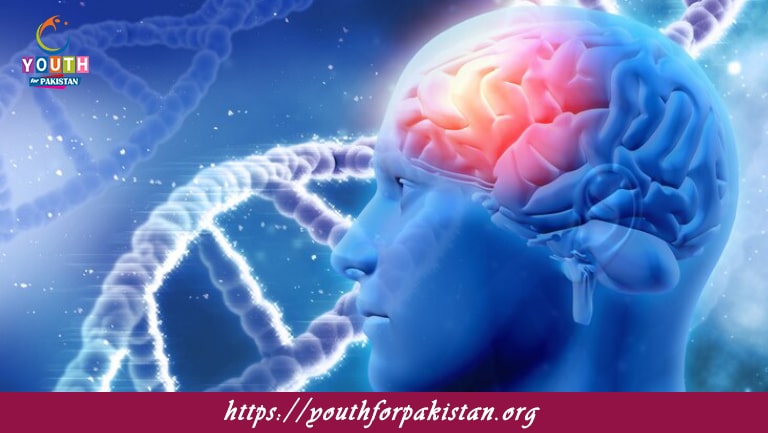Welcome to the Nervous System and Brain MCQs with Answers. In this post, we are sharing Nervous System and Brain Multiple Choice Questions and Answers in Everyday Science section for various competitive exams in Pakistan. Each question offers a chance to enhance your knowledge regarding Nervous System and Brain online MCQs Test.
What is the basic functional unit of the nervous system?
a) Neuron
b) Axon
c) Synapse
d) Dendrite
Which part of the brain controls balance and coordination?
a) Cerebrum
b) Cerebellum
c) Medulla
d) Thalamus
The autonomic nervous system regulates which of the following?
a) Voluntary muscle movement
b) Involuntary body functions
c) Reflexes
d) Sensory perception
Which part of the brain is responsible for memory and learning?
a) Brainstem
b) Cerebellum
c) Hippocampus
d) Hypothalamus
The protective covering around axons that speeds up nerve impulses is called:
a) Synapse
b) Myelin sheath
c) Neuroglia
d) Nucleus
Which part of the brain is responsible for regulating body temperature, hunger, and thirst?
a) Hypothalamus
b) Cerebrum
c) Medulla
d) Pons
The space between two neurons where neurotransmitters are released is called:
a) Axon
b) Synapse
c) Dendrite
d) Soma
Which of the following neurotransmitters is primarily involved in mood regulation?
a) Acetylcholine
b) Dopamine
c) Serotonin
d) Norepinephrine
Which structure in the brain is responsible for conscious thought and voluntary movement?
a) Cerebellum
b) Cerebrum
c) Brainstem
d) Medulla oblongata
Which of the following is the largest part of the human brain?
a) Cerebellum
b) Brainstem
c) Cerebrum
d) Thalamus
The part of the brain responsible for controlling heart rate and breathing is the:
a) Cerebellum
b) Medulla oblongata
c) Hypothalamus
d) Thalamus
What is the role of motor neurons?
a) Transmit sensory information
b) Send impulses from the brain to muscles
c) Release neurotransmitters
d) Process signals in the brain
Which lobe of the brain is responsible for processing visual information?
a) Temporal lobe
b) Frontal lobe
c) Occipital lobe
d) Parietal lobe
The central nervous system consists of which two components?
a) Brain and spinal cord
b) Brain and nerves
c) Spinal cord and nerves
d) Nerves and ganglia
Which part of the brain relays sensory information to the appropriate areas?
a) Hippocampus
b) Thalamus
c) Medulla oblongata
d) Pons
Which of the following is not a part of the peripheral nervous system?
a) Cranial nerves
b) Spinal nerves
c) Brainstem
d) Ganglia
The parasympathetic nervous system is part of which larger system?
a) Somatic nervous system
b) Autonomic nervous system
c) Central nervous system
d) Sensory nervous system
Which of the following is a glial cell that produces myelin in the central nervous system?
a) Schwann cells
b) Astrocytes
c) Oligodendrocytes
d) Microglia
Which brain structure connects the two hemispheres of the brain?
a) Hypothalamus
b) Corpus callosum
c) Thalamus
d) Brainstem
Which area of the brain is primarily involved in speech production?
a) Wernicke’s area
b) Broca’s area
c) Occipital lobe
d) Cerebellum
Which ion is primarily involved in the generation of an action potential in a neuron?
a) Potassium
b) Calcium
c) Sodium
d) Magnesium
The fight-or-flight response is mainly activated by which division of the nervous system?
a) Somatic nervous system
b) Parasympathetic nervous system
c) Sympathetic nervous system
d) Enteric nervous system
Which type of neuron carries impulses from sensory organs to the central nervous system?
a) Motor neurons
b) Interneurons
c) Sensory neurons
d) Relay neurons
Which part of the brain regulates the sleep-wake cycle?
a) Thalamus
b) Hypothalamus
c) Hippocampus
d) Medulla
What is the function of the cerebellum?
a) Memory storage
b) Coordination of movement and balance
c) Processing visual information
d) Regulating body temperature
Which of the following best describes a synapse?
a) Gap between two neurons
b) Part of the neuron that releases neurotransmitters
c) The insulating layer around axons
d) Sensory receptor
Which structure helps maintain homeostasis by linking the nervous system to the endocrine system?
a) Thalamus
b) Hypothalamus
c) Pineal gland
d) Medulla oblongata
Which of the following is a neurotransmitter associated with reward and pleasure?
a) Acetylcholine
b) Dopamine
c) GABA
d) Serotonin
The blood-brain barrier protects the brain from harmful substances in the blood. What type of cell is primarily involved in forming this barrier?
a) Neurons
b) Astrocytes
c) Microglia
d) Oligodendrocytes
What is the primary role of the pons in the brain?
a) Coordinate balance
b) Regulate breathing
c) Control vision
d) Process emotions
Which part of the brain is primarily involved in processing auditory information?
a) Occipital lobe
b) Parietal lobe
c) Temporal lobe
d) Frontal lobe
Which type of glial cell acts as the immune defense in the central nervous system?
a) Oligodendrocytes
b) Astrocytes
c) Schwann cells
d) Microglia
Which structure in the brain is responsible for forming new memories?
a) Hippocampus
b) Cerebellum
c) Amygdala
d) Brainstem
Which part of the nervous system controls voluntary movements?
a) Autonomic nervous system
b) Sympathetic nervous system
c) Somatic nervous system
d) Parasympathetic nervous system
What is the role of sensory neurons?
a) Process signals in the brain
b) Transmit information from the brain to muscles
c) Transmit sensory information to the central nervous system
d) Coordinate reflexes
Which brain region is involved in regulating emotions and fear responses?
a) Cerebellum
b) Amygdala
c) Thalamus
d) Hippocampus
Which of the following is part of the limbic system?
a) Cerebellum
b) Medulla oblongata
c) Amygdala
d) Pons
Which neurotransmitter is primarily associated with muscle contraction?
a) Dopamine
b) Serotonin
c) Acetylcholine
d) Norepinephrine
The spinal cord ends around which vertebra?
a) L1-L2
b) T1-T2
c) S1-S2
d) C1-C2
If you are interested to enhance your knowledge regarding Physics, Chemistry, Computer, and Biology please click on the link of each category, you will be redirected to dedicated website for each category.










